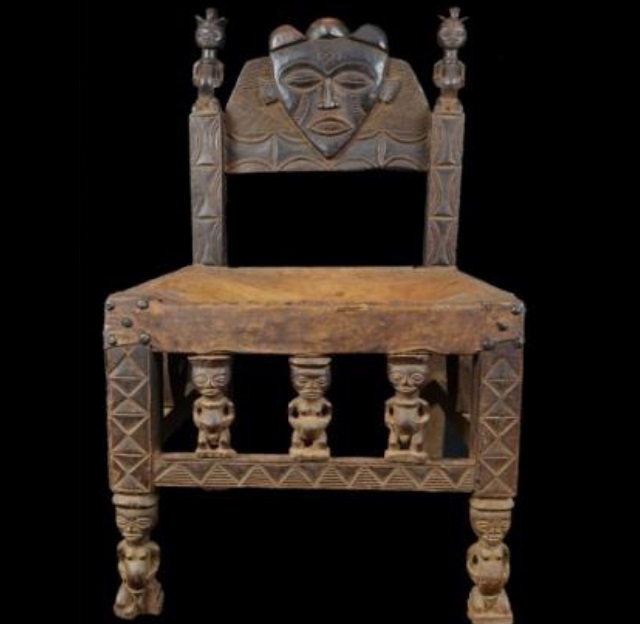
Will full restitution of African tribal art ever be realized and if so, how prepared are African countries to receive such priceless treasures?
Kampala, Uganda | DOMINIC MUWANGUZI | The conversation on the return of African art, popularly known as tribal artefacts by art scholars, has once again resurfaced in recent times. A few weeks ago, the Uganda Tourism Association asked for an establishment of a committee to lead the return of Ugandan artefacts from foreign Museums. The tribal artefacts include in particular, objects taken from Bunyoro Kingdom during the invasion of the British colonialists to the Kingdom in 1894. This plea is obviously inspired by a series of similar calls by a number of countries on the continent to have their art expressly returned. In 2018, the Ethiopian government made a similar request to the Victoria and Albert Museum in London to retrieve artefacts including a gold crown, a royal wedding dress and bones of Prince Alemayehu that were taken from the country during the battle of Maqdala. Though this request was made, it was otherwise meant with a dubious response of returning the artworks on a long term loan arrangement to the country.
 This particular response is a sign of how the West is very reluctant to honour the idea of restoration of tribal art to its original home. In reaction to this long term loan condition, the Ethiopian government vehemently refused the offer and instead asked that the return should be unconditional since the artefacts were obtained under questionable terms. This stance further complicated the subject and no amicable ground has been reached between the two parties until the present day. But the urgency to have these objects back to their original home, seem to have over powered some countries’ pride and independence. The Nigerian government instead agreed to the long term loan arrangement that influenced the return of some of the famous bronze sculptures looted from the Kingdom of Benin in 1879. Further plans by several museums in the UK to repatriate artworks taken from the Kingdom, have prompted the Nigerian government to pursue the construction of a state of the art museum in Benin State that will house the artworks once they return home.
This particular response is a sign of how the West is very reluctant to honour the idea of restoration of tribal art to its original home. In reaction to this long term loan condition, the Ethiopian government vehemently refused the offer and instead asked that the return should be unconditional since the artefacts were obtained under questionable terms. This stance further complicated the subject and no amicable ground has been reached between the two parties until the present day. But the urgency to have these objects back to their original home, seem to have over powered some countries’ pride and independence. The Nigerian government instead agreed to the long term loan arrangement that influenced the return of some of the famous bronze sculptures looted from the Kingdom of Benin in 1879. Further plans by several museums in the UK to repatriate artworks taken from the Kingdom, have prompted the Nigerian government to pursue the construction of a state of the art museum in Benin State that will house the artworks once they return home.
While many African countries are building pressure on Western art institutions and governments to have their art returned, within the corridors of power of these institutions is the long standing belief that African countries have no capacity to accommodate their own tribal art. This belief has been used as a weapon of rebuttal for over 40 years ever since the topic was brought up by a host of post colonial African governments. Though the topic has occasionally been buried with excuses of negotiations and ongoing extensive research on provenance, African art scholars and cultural practioners on the continent do not subscribe to such escapism. Their argument is that if African cultural institutions were able to keep and preserve these treasures for over 700 years, what can stop them now? According to this group, they have described this as another form of neo-colonialism from the former colonial masters.
The ability to store and display tribal objects in ways that can meet the required international standards, is certainly what African governments and their stakeholders in the art sector are lacking. In Uganda, there is no museum of art worth of mentioning; save the Uganda Museum which again doesn’t have a reputable Museum director and curator. There have been intervention by a few cultural entrepreneurs or sympathizers to mitigate the absence of cultural museums locally, but their size and structure guarantees them no serious reputation to house artworks that are worth billions of USD. The most popular cultural museums are located in former residential homes, are poorly managed as personal or family enterprises and lack in documentation of the histories they claim to preserve and promote. Here the defense that African museums cannot preserve their own artefacts gains credibility.
It is a tight rope to walk for many African countries that are petitioning for the restitution of their artefacts back home. In their pursuit to repossess what truly belongs to them, lie several challenges. Firstly there are no proper or adequate infrastructures to accommodate these treasures back home and secondly, the restitution is largely conditioned by lengthy provenance research that has to prove if exactly the objects were indeed stolen. Outside such complexities, the absence of a unified voice to negotiate unconditional terms of the return of the artworks highlights the little preparedness African governments have undertaken to house their art permanently. This therefore is the real absurdity and not the reluctance of the return of the looted art.
****
 The Independent Uganda: You get the Truth we Pay the Price
The Independent Uganda: You get the Truth we Pay the Price




You seem to have bought the arguments of the colonialists, They must return what they stole.
The bones of Prince Alemayehu were not taken from Maqdala in 1868. After the battle of Maqdala and the defeat of Tewodros II, the British took his young son, Prince Alemayehu, aged 7, to England where he went to school and died at the age of 18. The prince is buried in Windsor Castle, England. Ethiopians have been asking for the human remains of the young prince in vain.
See Kwame Opoku, Looted Ethiopian Tabot Concealed Permanently In Westminster Abbey, London. Is There Somewhere A Minimum Sense Of Shame?
https://www.modernghana.com/news/868507/looted-ethiopian-tabot-concealed-permanently-in.html